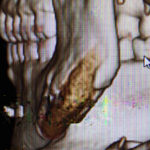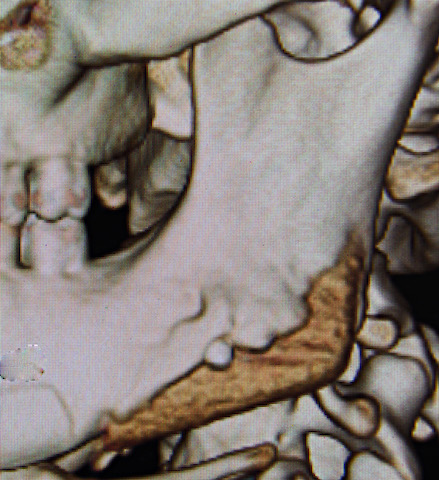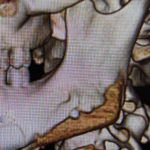The stimulation of bone formation is very common with certain types of facial implants. Because they require subperiosteal elevation to create the pocket and the subsequent placement of the implant acts as a spacer (maintains the raised periosteum off of the bone), bone formation can occur. This always develops around the periphery of the implant at the junction of the maintained bone-periosteal interface. This biologic response is seen regardless of the material composition of the implant.
Where this bone formation response is most profoundly seen is along the jawline. This is undoubtably a reflection of it being the most robust bone of the face given that it is the largest moving bone above the clavicles and is exposed to masticatory forces. It has been recognized to occur in chin implants for decades as any plastic surgeon that has removed/replaced chin implants can attest. It typically presents as a very thin layer of bone that incompletely covers the perimeter of the implant and will extend as far back as along its wings. In rare cases chin implants have been known to become completely covered in a very thin layer of bone.

The real relevance of bone formation around jaw angle implants is what it means for revisional surgery. Removing and repositioning an implant is going to require removal of this bone. The bone surface must again be made flat if possible. Knowing the location and extent of this bone surface is important preoperative information and speaks to the value of getting a 3D CT scan.
Dr. Barry Eppley
Indianapolis, Indiana





